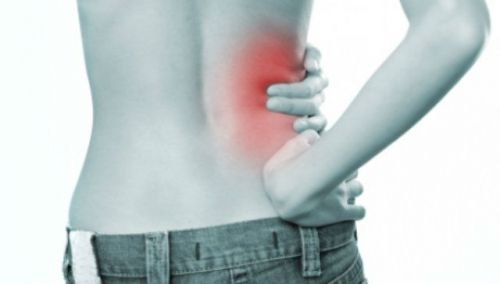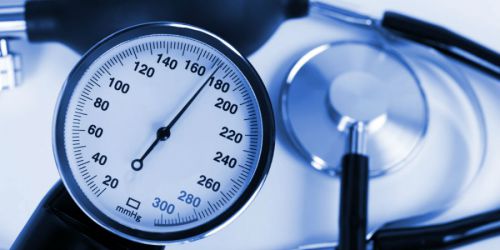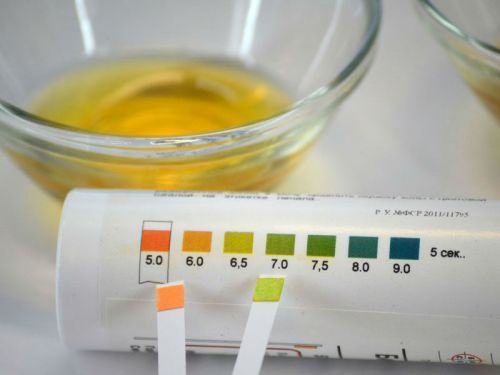Speaking of inflammatory processes in the kidneys cannot be restricted to one disease. Modern data on the causes and mechanism of development require the allocation of two different inflammatory diseases: glomerulonephritis and pyelonephritis.
They account for 70% of all renal pathology.
The most commonly affects women aged 20 to 40 years, girls. The trend is spreading among the elderly without regard to sex. The symptoms of inflammation of the kidneys and the results of laboratory studies of each form differ. They constructed differential diagnosis.
We consider signs of inflammation of the kidneys in primary and secondary process, acute and chronic course of the disease, identify features of affected children, women and men.
Occurs and is manifested as acute pyelonephritis?
For the occurrence of acute pyelonephritis important relationship to the preceding infectious disease and background pathology. If the inflammation occurs in a previously healthy person (primary) with a well-developed immunity, it expressed violent reaction, severe intoxication common symptoms.
The defeat of the renal tissue with signs of stagnation of urine (secondary), caused by
- stones in the course of the outflow pathways;
- tumor growth in the bladder;
- disturbed muscle tone of the ureter and detrusor in diabetes, pregnancy, a period takes less common, but more persistent, a limited form with pronounced local characteristics.
The first signs of disease in a patient with primary inflammation occur 2-4 weeks after infection. Most often it is sore throat, ulcers on the skin, mastitis in women.
The patient may specify at the date of the disease, because from the beginning of the rapid:
- the temperature rises to very high figures, thus the patient feels chills, a sharp decline occurs independently without any medication, followed by profuse perspiration;
- headache, nausea and vomiting depend on the degree of intoxication;
- lower back often on one side has a dull pain that amid a General heavy feeling aches in joints and muscles first don’t pay attention.

Local pain on the left or right in the back and lower back become more pronounced by the third day of the disease.
The pain may radiate in the groin, upper quadrant, characteristically increased with movement, coughing
The dysuric phenomena are not. Of urine excreted is small, but this is due to fluid loss with sweating. In viral acute pyelonephritis is detected by blood in the urine.
Medical examination shows:
- the tension of the abdominal muscles on the affected side;
- positive symptom pasternatskogo (a painful beating in the back);
- thin people and children palpable painful pole of the kidney.
In secondary inflammation of the kidneys intoxication weakly expressed. The main local manifestations. Headaches occur when increased blood pressure.
Possible previous attacks of renal colic with subsequent temperature rise and manifestation of symptoms:
- pain of a permanent character and localization;
- the patient feels extreme weakness, thirst;
- appear dizuricheskie phenomena in the form of sharp pains when urinating, frequent and painful urination;
- against the background of increasing blood pressure possible paroxysmal palpitations, stabbing pains in the heart area.
The doctor discovers a pronounced local symptoms on the affected side.
Which is typical for chronic pyelonephritis?
Clinic of chronic pyelonephritis depends on the phase of activity of inflammatory diseases.
When the hidden (latent period) – manifestations are very scarce or absent, the patient is possible:
- periodically strange “jump” the low temperature;
- a feeling of weakness, chilling;
- loss of appetite;
- bad taste of food;
- discomfort in the lower back.

This inflammatory process in the kidney is sluggish, the General and local symptoms erased.
Temperature is called low-grade, not always paying attention to her
In the active phase of the unfolding of the clinical picture of acute pyelonephritis with the characteristics of the urine and blood samples. ¼ Of patients have increased diastolic blood pressure.
In the remission phase of recovery occurs, the symptoms of inflammation are absent.
Its duration is determined by:
- the prevalence of pyelonephritis one or both kidneys;
- the presence of obstacles to the flow of urine;
- concomitant diseases;
- the usefulness of the treatment.
The identification of the patient in the latent stage presents considerable difficulties in diagnosis because it:
- no obvious lower back pain;
- missing or non-dysuric symptoms;
- the temperature is normal or occasionally slightly elevated.
With long-term progressive course of chronic pyelonephritis is renal scarring due to proliferation of connective tissue.

Disturbed excretory function and in patients with increasing symptoms of uremia:
- nausea and vomiting;
- dryness and peeling of the skin;
- the face is pasty and swollen, skin color changes to grayish;
- language is constantly dry with a touch of dirty brown hue;
- dry lips with cracks in the lining.
Symptomatic hypertension occurs in 40-70% of patients
For the late stage is characterized by polyuria – excessive excretion of urine (per day up to three liters or more). In this case lost vital electrolytes – potassium, sodium, chlorine.
What is acute glomerulonephritis?
Before the beginning of the disease must undergo a period of sensitization (increased allergic mood). Often provide it the disease caused by β-hemolytic Streptococcus or a virus. Before the appearance of symptoms of damage of the glomeruli is from two days to six weeks. The patient carries a sore throat, erysipelas of the skin, furunculosis, pharyngitis. For a child of a typical scarlet fever, pneumonia, immunizations
All the symptoms of acute glomerulonephritis are divided into:
- renal,
- extrarenal.

In the clinic isolated syndromes:
- urinary,
- swollen,
- nephrotic,
- cardiovascular.
At the beginning of the disease, swellings are formed in the morning
In each case the severity of different syndromes:
- Swelling can occur in the form of small pastoznost face, eyelids, hands or with ascites. Due to the edema increases the mass of the body. The greater the swelling, the less is excreted in the urine (up to 200-300 ml/day).
- The patient concerned about irregular headaches, nausea. vomiting. This increases blood pressure, especially diastolic.
- The heart rate is reduced to 50-60 per minute (bradycardia). Acute degeneration of the myocardium causing arrhythmias and, less frequently, heart failure with shortness of breath. Swelling in the legs.
- The body temperature rises to 39 degrees.
- Patients feel very fatigued.
- Significant lower back pain no, but the target questioning patients report a feeling of heaviness, dull pain.
- Detected by the reddening of urine (by extracting the blood through the damaged glomeruli).
With timely treatment after a week recovering the filtration function of the kidneys, occurs polyuria (increased urine output). 80% of patients recover. Some changes in the urine are kept to a year.
Clinical manifestations of chronic glomerulonephritis
20% of patients the glomerular vascular damage after acute illness passes in the chronic stage. It is characterized by a sluggish current with periodic hypertensive crises.
Depending on the predominant symptoms emit forms of inflammation:
- latent,
- nephrotic,
- hypertension,
- mixed.
Undulating course of the disease: the periods of exacerbation followed by remission. Each activation is manifested by signs of acute glomerulonephritis. A very significant risk of progression in stage of renal failure.
Patients have:
- sensation of dryness in the mouth, the unpleasant smell of urine in the mouth
- blindness;
- constant drowsiness;
- possible seizures.
What laboratory tests can reveal inflammation of the kidneys?
For pyelonephritis is characterized by changes in the urine are:
- severe leukocyturia;
- bacteremia with detection of one or more pathogens in the tank. sowing;
- active leukocytes and cells Shterngeymera-Malbina with a special color;
- traces of protein;
- isolated erythrocytes and cylinders;
- a lot of mucus and salts.
In the blood:
- pronounced leukocytosis with a left shift;
- significantly accelerated ESR.
For acute glomerulonephritis characteristic changes in the urine (urinary syndrome):
- decrease in weight;
- the color of “meat slops”;
- proteinuria (protein in urine), protein loss is determined by the severity of inflammation and lesions of the glomeruli;
- hematuria – red blood cells with characteristic changes in the color, in 1/5 patients is estimated as gross hematuria (visible in the color of urine);
- the number of cells is moderately increased, the bacteria isolated or missing;
- cylindruria – detect in the sediment hyaline and granular casts, as casts of the tubules, formed from the protein of red blood cells.
In the blood:
- moderate leukocytosis, eosinophilia and acceleration of erythrocyte sedimentation rate;
- the increase in creatinine and residual nitrogen is found only in the stage of uremia;
- low concentration of potassium, sodium.
What elements found in urine sediment depends on many differential diagnosis of pyelonephritis and glomerulonephritis
Features of clinical picture inflammation of the kidneys in children
The initial symptoms of inflammation of the kidneys in children should notice the parents and immediately consult a pediatrician. The signs can occur during recovery from sore throats, respiratory infections, scarlet fever, in the period after the next vaccination.
The child:
- the temperature rises to high numbers;
- you receive an excitation;
- changes the color of urine more dark, muddy with flakes;
- we can assume cramps when urinating because of the crying;
- loss of appetite;
- vomiting;
- in older age, pain in the lower back, abdominal, bedwetting. vomiting;
- in infants possible convulsions and a high temperature.
If necessary, the doctor will prescribe the examination and outpatient treatment. If the mother is given a direction to treat the child in stationary conditions, should not be abandoned.
If there are typical symptoms in women and men?
The symptoms of inflammation of the kidneys in women, develop more clearly and quickly. This is facilitated by the anatomical structure of the urinary system. Women have a much more “favorable” conditions for infection of the urethra with subsequent urinogenous mode of transmission of inflammation to the kidneys.
The longer urethra in men, prevents the symptoms of inflammation of renal tissue, the best “cleans” the bottom of the path of urinary output. However, boys and men with phimosis, there is a danger of accumulation of pathogenic bacteria in the crease of the foreskin.
In addition, the male has the disease, such as prostatitis, adenoma, which adversely affect the flow of urine. Delay leads to increased growth of bacteria.
The clinical picture of acute and chronic pyelonephritis, glomerulonephritis does not depend on the sex of the sick person.
Special danger of kidney damage should be considered for pregnant women:
- in the first trimester – due to hormonal changes increases the risk chestosneako pyelonephritis;
- in the third trimester, the growing uterus increases pressure on the bladder, contributes to slowing the flow of urine.
Signs of inflammation of the kidneys cannot be assessed independently. In identifying similar symptoms should consult a doctor. Self-treatment only increases the prevalence of inflammation. Buds to cure is possible if you start in a timely manner and to conduct all the necessary courses.




Excelⅼent blog you have here.. It’s difficult to find high quality writing like yours nowadays.
I really appreciate people like you! Take care!!